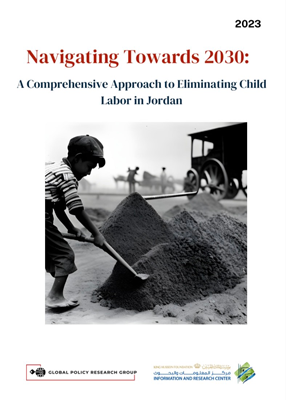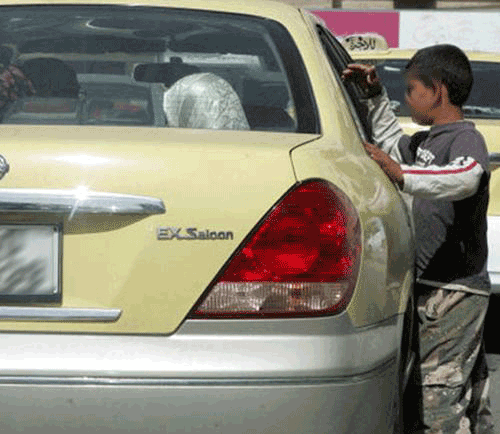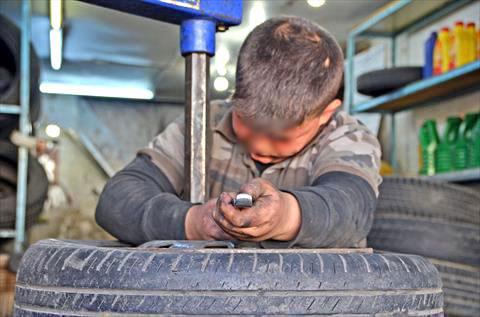You are here
Effects of child labour harm Jordan’s economic future, paper finds
By Mays Ibrahim Mustafa - Aug 03,2023 - Last updated at Aug 03,2023

AMMAN — Poverty, weak market regulation, gender roles, a lack of access to education and migration status are the main drivers of child labour in Jordan, according to a recent policy paper by the Global Policy Research Group and Information and Research Centre at the King Hussein Foundation.
The paper, titled “Navigating Towards 2030: A Comprehensive Approach to Eliminating Child Labour in Jordan”, said that approximately 70,000 children between the ages of 5 and 17 are trapped in child labour in Jordan. Many of the children work as domestic labourers, street vendors and agricultural workers.
Poverty forces low-income families to rely on the income of their children to meet their basic needs, “often at the cost of their education and well-being”, the paper said.
“Low quality education and a lack of access, strict gender roles, and high migration rates have the potential to replicate, perpetuate and accentuate poverty, making it difficult for children to escape from this unfortunate cycle,” the paper added.
Barriers that curtail children’s access to a quality education and increase school dropout rates, such as school-related expenses, overcrowding in classrooms and bullying make children more vulnerable to exploitation, according to the research.
“Furthermore, social norms and gender roles in Jordan push male children into the workforce and keep females at home, fulfilling domestic duties that may qualify as child labour,” it added.
According to the paper, migration also increases the risk of child labour, as displaced families may lack social and economic support systems, in addition to being exposed to a loss of income.
These conditions put refugee children at an increased risk of being exposed to exploitative work conditions, it added.
Additionally, the paper found that the weak implementation of market regulations enables “exploitative” practices, such as low wages and hazardous working conditions.
“Children are frequently employed as a low-cost workforce that is more tolerant of abuse than adults, primarily in Jordan’s agriculture and retail trade sectors,” the paper noted.
Despite government efforts to eradicate child labour, there remain systemic gaps that impede the effective enforcement of labour laws.
“Some of the gaps identified include a low number of available inspectors, as compared to the ILO recommendation of 1 inspector per 15,000 workers to successfully identify, follow up on and promptly implement labour law regulations,” the paper said.
The paper also explored the impact of child labour on children’s physical and mental health, in addition to its long-term economic implications.
“Child labour detrimentally affects a child’s physical growth, exposes them to hazardous conditions and increases their susceptibility to various diseases. It also leads to psychosocial issues, including feelings of inferiority, loneliness and depression,” it stated.
At the macro level, child labour negatively impacts long-term economic growth and development due its repercussions on human capital accumulation, fertility, health, technical change, income inequality and gender inequality, it added.
The paper explained that without access to education, children are deprived of the opportunity to develop essential skills and competencies that would be necessary to access more remunerative jobs in the future.
Related Articles
AMMAN — A position paper published by local NGO Tamkeen for Legal Aid and Human Rights argues that the phenomenon of child begging in
AMMAN — Child labour has become a serious issue in Jordan, especially during the pandemic, according to officials.The National Child Labour
AMMAN — Eliminating child labour requires a comprehensive approach that addresses its root causes by tackling poverty and increasing childre



















